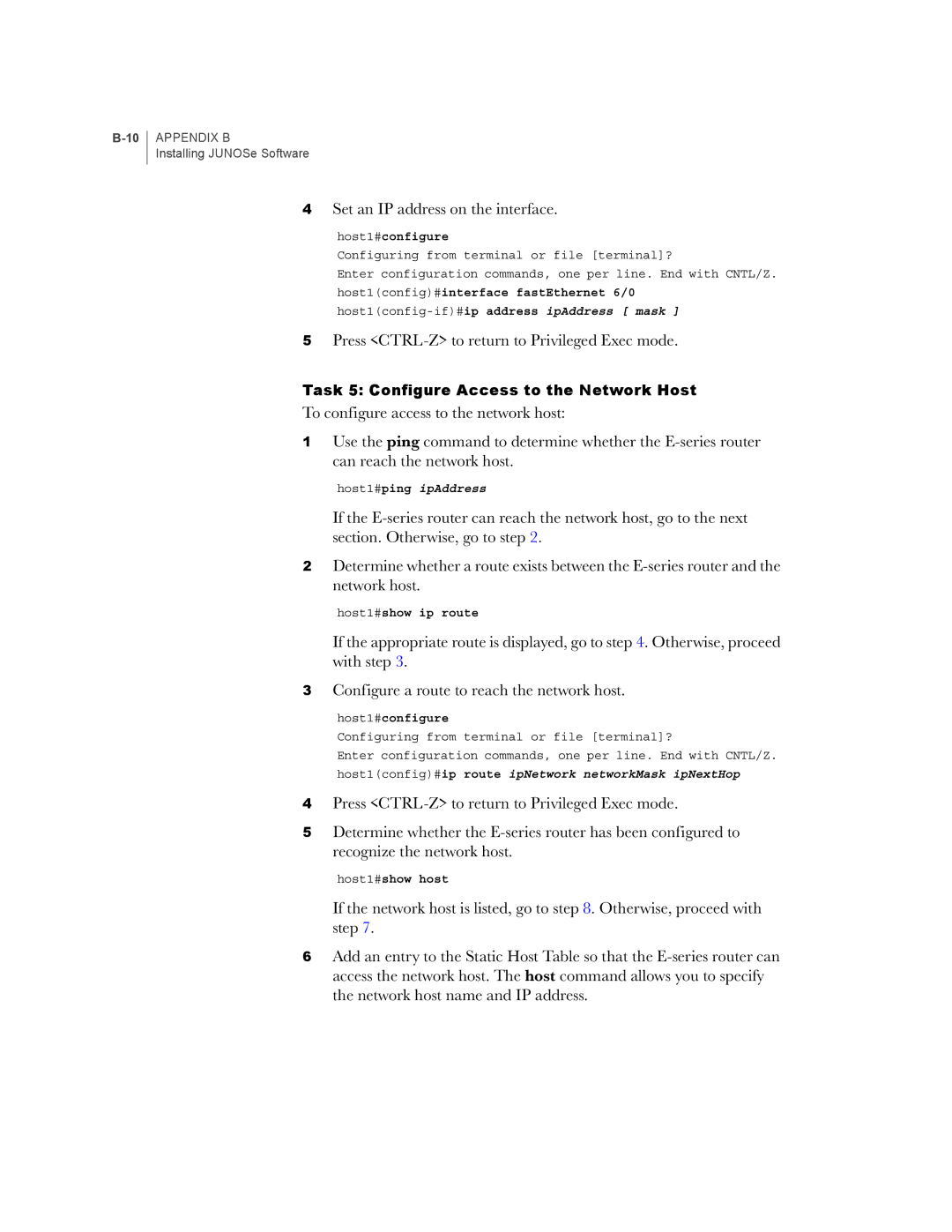Add an entry to the Static Host Table so that the E-series router can access the network host. The host command allows you to specify the network host name and IP address.
6
host1#configure
Configuring from terminal or file [terminal]?
Enter configuration commands, one per line. End with CNTL/Z. host1(config)#ip route ipNetwork networkMask ipNextHop
4 Press <CTRL-Z> to return to Privileged Exec mode.
5 Determine whether the E-series router has been configured to recognize the network host.
host1#show host
If the network host is listed, go to step 8. Otherwise, proceed with step 7.
Configure a route to reach the network host.
3
Task 5: Configure Access to the Network Host To configure access to the network host:
1 Use the ping command to determine whether the E-series router can reach the network host.
host1#ping ipAddress
If the E-series router can reach the network host, go to the next section. Otherwise, go to step 2.
2 Determine whether a route exists between the E-series router and the network host.
host1#show ip route
If the appropriate route is displayed, go to step 4. Otherwise, proceed with step 3.
Press <CTRL-Z> to return to Privileged Exec mode.
5
Set an IP address on the interface.
host1#configure
Configuring from terminal or file [terminal]?
Enter configuration commands, one per line. End with CNTL/Z. host1(config)#interface fastEthernet 6/0 host1(config-if)#ip address ipAddress [ mask ]
4
APPENDIX B
Installing JUNOSe Software
